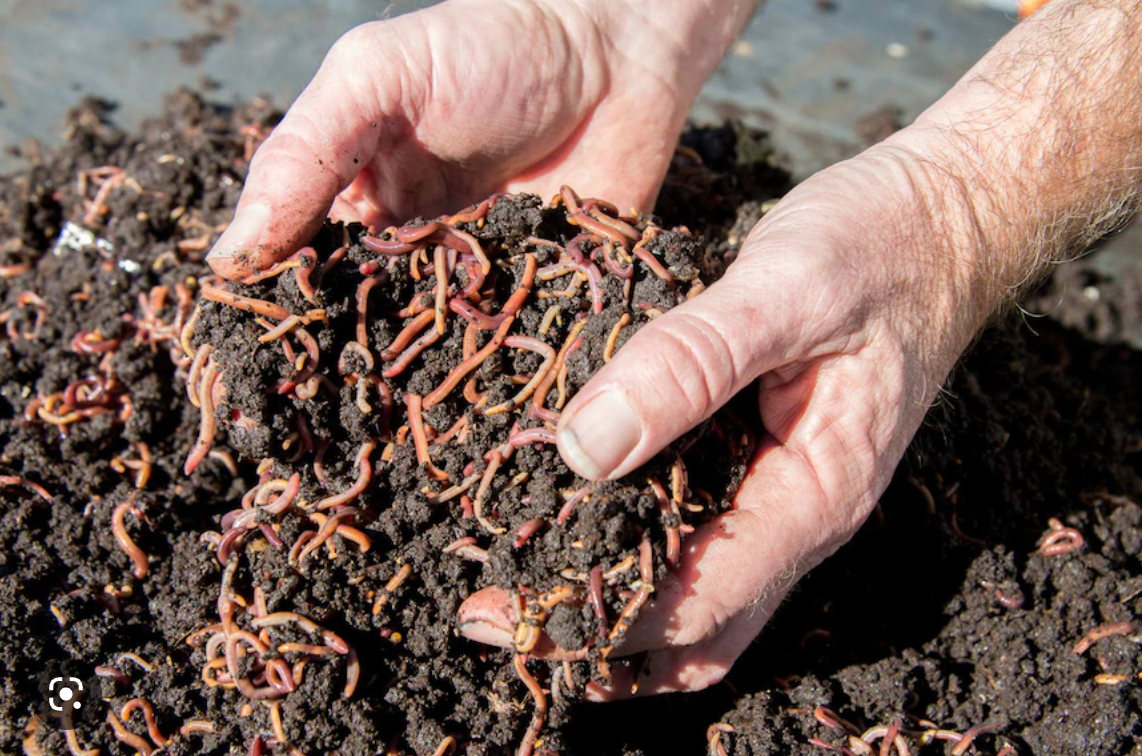How to start a worm farm.
So you are looking to start your very own worm farm at an affordable price, but don’t know where exactly to start, after being hit with hundreds of articles and videos all telling you different things…
In this blog, I will go over exactly why you need to start a worm farm and go over the fundamental procedure on how to begin your worm farming journey, on a shoestring budget!
In this blog: How To Start A Worm Farm
Table of content
- What is a worm farm and why should you start
- Step by step guide on starting your very own worm farm on a shoestring budget
- Where to purchase inexpensive worm bags to start your worm farming journey
What is a worm farm and why should you start
Worm farming is another way to dispose of unwanted food waste and in the process produce an organic fertilizer called vermicompost which will help your plants and crops grow. Food scraps are placed in the worm farm and special worm farm worms eat their way through it, producing the vermicompost.
If you are looking to eliminate food waste and produce an organic fertilizer to help crops grow. And even potentially generate a side income via selling worms and worm compost… all via a simple in-expensive, easy to set-up method… then you should start worm farming!
Step by step guide on starting your very own worm farm on a shoestring budget
Part 1: Setting up your worm farm
Setting up your very own worm farm is actually quite simple! No matter how large you want your farm to be, the fundamentals still apply to all size worm farms. For the following example, we will stick to setting up a farm of five worm bins (This can be expanded or contracted to how-ever many worm bins you like!), on a low budget!
Step 0 - Purchasing all of the correct equipment
As we are setting up a worm farm for 5 worm bins on a low budget, we want to keep the equipment costs as low as possible…
Items needed:
- 5 cheap worm bags (click here to purchase our cheap 5 gallon Memes Worms bags)
- Large supply of moistened newspaper/cardboard strips
- Water
- Bucket
- Worms (click here to purchase our red wiggler worms perfect for your worm farm)
- Coco coir (click here to purchase our coco coir)
- Moistened natural cloth
—
Step 1 - Place the moistened newspaper or cardboard strips (cut into ½ inch to 1 inch strips) at the bottom of the bag. Fill the bag up to about ⅓ rd with the newspaper/cardboard moistened strips.
Step 2 - Place the coco coir in a ¼ filled bucket of water so it expands (Put more water and mix until the coir is expanded into its full form)
Step 3 - Fill up the bag with the coco coir (add it on top of the cardboard strips) to about ⅔ of the bag's size.
Step 4 - Add the worms (about 1000 worms) on top of the coco coir and spread them out on top (don’t overly mix the worms with the coir, just lightly spread it out on top)
Step 5 - Add a moistened natural cloth at the very top to keep the worms nice and moist
Step 6 - Place the worm bag in a nice and moist environment (refer to this blog to understand the perfect temperature for a worm farm)
Step 7 - Repeat for the other 4 worm bags & leave them for a few days before starting the maintenance procedure (Which includes giving them food scraps)
Part 2: Maintaining your worm farm
Maintaining your worm farm is very simple. Feed worms approximately 3 times their weight per week with organic foods (refer to this blog to find out exactly what foods you should feed your worms), and keep the worm bins free of pests (click here to find out how!).
After maintenance your worm compost will be ready for harvest in 3 to 6 months!
Step 3: Choosing the Right Location
Selecting the ideal location for your worm farm is crucial for its success. Worms thrive in moderate temperatures, so avoid placing your worm bin in direct sunlight or extreme heat. Look for a shaded area that maintains a temperature between 55°F to 77°F (13°C to 25°C).
Additionally, consider accessibility and convenience. Since you'll be regularly feeding and maintaining your worm farm, it's best to place it somewhere easily accessible. A backyard, balcony, or even a basement can make excellent locations for your worm farm.
Moreover, ensure that the location is safe from potential disturbances. Keep it away from areas where it might get knocked over or where pests could become a problem.
Step4: Building Your Worm Bin
Now that you have a suitable location, it's time to set up your worm bin. You can purchase a ready-made worm bin or create one yourself using inexpensive materials. We suggest using a memes fabic grow bag 
To construct a DIY worm bin, you can use materials such as plastic storage containers, wooden crates, or even repurposed furniture like old dressers or drawers. Ensure that the container has drainage holes at the bottom to prevent excess moisture buildup.
Layer the bottom of the bin with shredded newspaper or cardboard to create bedding for the worms. This bedding will provide a comfortable environment for the worms and help maintain moisture levels.
Where to purchase inexpensive worm bags to start your worm farming journey
To begin your worm farming journey, click the links below to purchase your very own inexpensive worm bags, coco coir and worms! Don’t forget to use code “WORMS10” at checkout for a limited time offer only available for blog readers!





Leave a comment
All comments are moderated before being published.
This site is protected by hCaptcha and the hCaptcha Privacy Policy and Terms of Service apply.